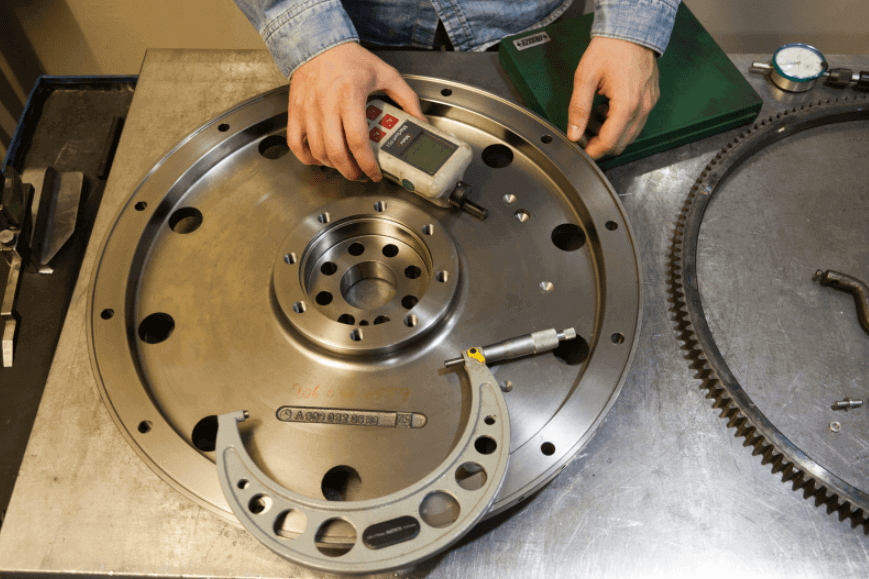What is a Flywheel?
The flywheel is a large toothed component that enables the engine of a vehicle to start with a single motion by turning the ignition. It is present in vehicles such as motorcycles and cars equipped with internal combustion automatic starter systems. Powered by the starter dynamo, this large toothed part ensures that the starter dynamo operates when you turn the ignition to start your vehicle. The rotating force generated in the starter motor is transmitted to the flywheel gears. Subsequently, it transfers the rotating force to the crankshaft, serving as a bridge. The engine starts when ignition occurs, and the fuel system is activated.
Why Does the Flywheel Gear Fail?
While the flywheel gear is a sturdy component, like everything else, it has a lifespan. Single-mass gears work smoothly for many years. However, when looking at those with a dual-mass (spring-loaded) feature, they generally need replacement around 100,000 kilometers. Despite being robust, hard use of the vehicle can lead to cracking or even breaking. Similarly, skidding movements negatively impact it, causing surface wear. If the vehicle is in running condition and the starter is engaged, it can lead to damage. Prolonged use of the vehicle with a faulty flywheel can also contribute to further damage.
What are the Symptoms of Flywheel Failure?
Detecting that the problems may originate from the flywheel gears can be challenging. The damage occurs as the teeth wear over time, disrupting the balance adjustment of the vehicle. In both automatic and manual transmission vehicles, if there is significant vibration during idle speed, there is likely a problem with the flywheel. Another way to identify the issue is through the sound produced when engaging the starter. Additionally, if the flywheel bolts become warped or loose, excessive vibration occurs in the vehicle. Failure to address the issue promptly can lead to damage to other components.
How to Replace the Flywheel?
When you identify a fault in your vehicle, it needs to be repaired. Repairing it is quite challenging. When fractures or cracks occur, it needs to be replaced with a new part. Before installing the new part, make sure there is no rust or dirt on it. If the surface is rough, it should be cleaned with sandpaper. Now, onto the replacement process. First, remove the transmission in your vehicle. Then, the clutch set and gear must be removed. Afterward, the shaft seal must be removed and replaced with a new one. In the final step, the new one should be carefully and meticulously installed.
Which Type Should Be Preferred?
For vehicles with high torque and no heavy-duty or cargo transportation needs, it is recommended to choose a fixed flywheel. It is also a budget-friendly option. If your vehicle has high torque and you will be engaged in heavy-duty or cargo transportation, a flexible flywheel is recommended for enhanced driving comfort. However, due to higher costs and maintenance, it is not often preferred in standard automobiles.

